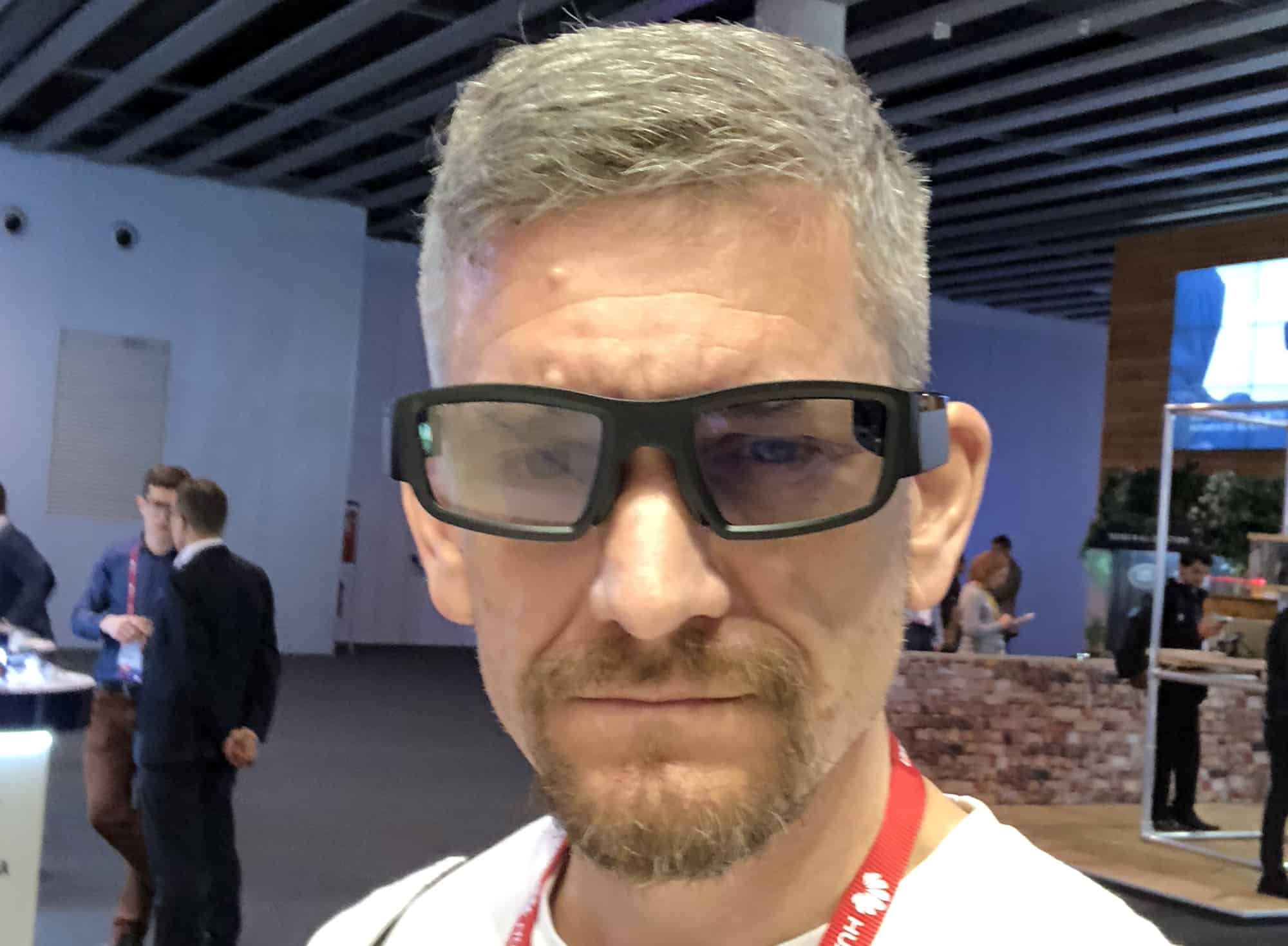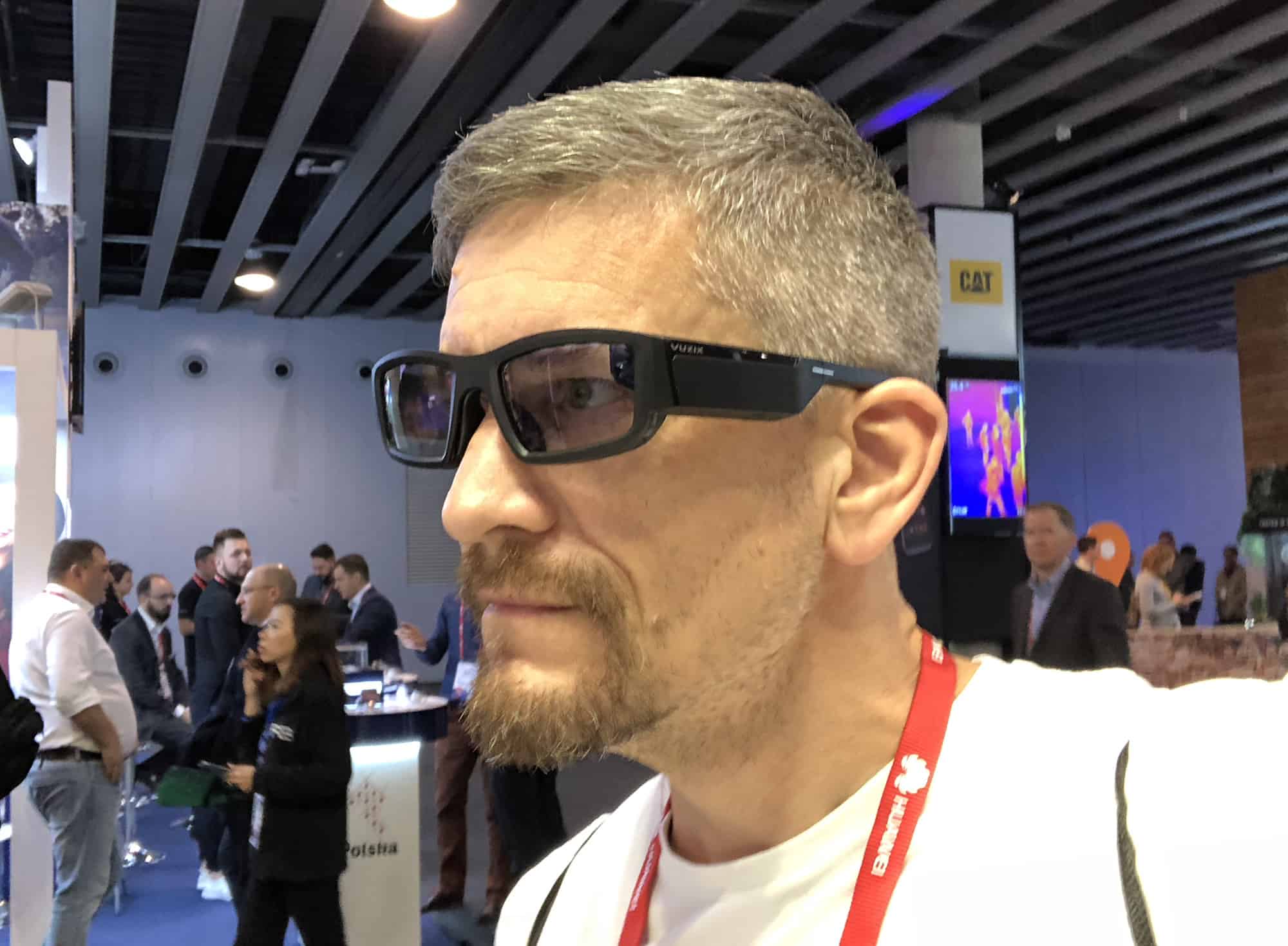 BARCELONA, Spain — The best product I’ve tried out at this year’s Mobile World Congress is the Vuzix Blade AR glasses. These smart specs superimpose a sharp, high-definition display over your regular vision, making real life resemble an awesome Xbox game.
BARCELONA, Spain — The best product I’ve tried out at this year’s Mobile World Congress is the Vuzix Blade AR glasses. These smart specs superimpose a sharp, high-definition display over your regular vision, making real life resemble an awesome Xbox game.
The Blade basically delivers on everything that Google Glass tried to do, but without sucking. I was skeptical about the rumors that Apple is developing its own augmented reality glasses. But what I saw through the lens of a Vuzix Blade showed me how far this technology has come — and just how cool Apple AR glasses could be.
AR glasses are not really augmented reality … yet
At first, I was a bit disappointed to discover that Vuzix Blade does not provide true augmented reality. At least, not in the sense that Apple means it with ARKit, the augmented reality framework introduced in iOS 11.
While the Vuzix Blade AR glasses do superimpose computer graphics over your real-world eyesight, the computer-generated elements are not actually placed into the 3D environment. Instead, they appear to float in the middle distance, moving with your head, rather than the environment you are in. So unlike Microsoft HoloLens and Magic Leap, these are not AR goggles.
The power of an HUD
What Vuzix Blade actually provides is a head-up display, or HUD. As any fighter pilot or gamer will know, a HUD is a transparent display that overlays information in your field of vision. That way you don’t need to take your eyes off what you are doing to look down at a screen.
HUDs prove indispensable when you are trying to blast bad guys out of the sky. With Vuzix Blade, that kind of real-time data could come in handy when I need to instantly know that someone just liked my cute Instagram selfie.
What makes this HUD special is that it is a really, really good one. I was wary at first to try on something that messes with my vision. I often find that VR headsets and 3D glasses make me queasy. Once I even fell over while looking at one of those magic eye pictures.
But I could happily stare at the Blade display for hours. It looks super-crisp, and appears as if it is a very comfortable distance away from you. I have no idea how Vuzix achieves this effect, but the company really nailed it. (Vuzix intriguingly refers to its AR tech as waveguide technology).
No matter what it’s called, or how it works, you need to try it to see just how good it really is.
Overcoming the failings of Google Glass
Back in 2013, when Google was promoting Google Glass, Apple chose to place its bet on watches. Tim Cook dismissed Google Glass, suggesting that our wrists were a more natural location for wearable technology. Of course he would have said that. At the time, Cupertino was hard at work perfecting Apple Watch, unveiled a year later.
As it turns out, Cook was right. Google Glass turned out to be an expensive flop, whereas Apple Watch is now outselling the entire Swiss watch industry. So what might have changed since then, to pique Cook’s interest in smart eyewear?
One answer is clearly AR. Apple is seriously into promoting this technology. And ARKit apps would be way more cool if you didn’t have to hold up your iPhone in front of you to use them. But I think there’s more potential for Apple Glasses than just AR alone, as Vuzix Blade demonstrates so well.
Google Glass was a great idea in theory. Like Apple Watch, it was intended to be a second screen for your smartphone, so you could quickly glance at stuff like notifications and directions without having to get your phone out of your pocket.
Why Vuzix Blade could make Apple focus on eyewear
Vuzix Blade offers similar functionality, including Alexa integration. But I think it has a much better chance than Glass for three reasons:
- The screen is way better : Google Glass delivered more of a picture-in-picture effect. Its display appeared as a small, ghostlike, semi-transparent rectangle. In contrast, the Blade screen is big, vibrant and genuinely see-through. You don’t need to take your eye off what you are doing.
- You look (a little) less dorky wearing it: The prism and camera element of Google Glass appeared in front of your glasses. It looked very obvious, as if someone had stuck a great big Lego brick on your specs. People wearing Google Glass became known as “glassholes.” I wouldn’t say Vuzix Blade completely solved the dorky problem (as my headshot below demonstrates). But I look like a dork anyway, even without the glasses, so it’s a bit hard to judge. At least the design of the Blade looks more integrated, without any clunky bolt-on components. To me, this is a big step in the right direction.
- It will be more affordable: I got different answers from the Vuzix reps I spoke to when I asked how much the Blade AR glasses would cost. They all seemed to agree it would be under $1,000, and hopefully significantly less. That compares well to Google Glass, which cost $1,500 at launch. But anything near the four-digit price point is still expensive. I think Blade needs to reach a price similar to Apple Watch before it can become truly mass-market.

Photo: Graham Bower/Cult of Mac
How Apple Glasses will differ from Apple Watch
As Apple Watch has matured as a product, two key use cases have become clear: notifications and activity tracking. These are core features of Vuzix Blade as well, but with a big difference: Smart glasses are better for notifications, and worse for activity tracking.
Why? For an activity tracker, you want something you wear all the time, to track what you are doing throughout the day. But realistically, I think people would only wear Vuzix Blade when they are out and about, walking, running or cycling. They would surely take them off when they get home, so these AR glasses will never log all your lazy coach potato hours. (Maybe that’s a good thing.)
But Vuzix Blade likely would prove far better than Apple Watch for receiving notifications. For example, I find it a real hassle to check Apple Watch notifications when I’m on a run. It’s fiddly if I have to come out of Apple’s Workout app, then swipe down the Notification Center, and then squint at the tiny text jiggling about on my wrist. With the Blade, I could keep my eyes on the road ahead and see notifications appear in crystal-clear text that actually moves with my head, so it doesn’t jiggle.
A HUD is also way better than a watch for tracking your running and cycling workouts. A HUD lets you see your current pace, distance and time without having to mess up your form by raising your wrist or taking your eyes off the road ahead.
Directions is another great example where Vuzix Blade has the edge. Rather than recognizing the Apple Watch’s subtly different haptic vibrations for left and right, AR glasses can actually show you arrows right in front of you to tell you which way to go.
Unlike watches, apps for glasses could be awesome
When I’m out for a run with my Apple Watch, I often see beautiful stuff I want to photograph, like sunsets. So I really miss having a camera when I leave my iPhone behind. Vuzix Blade has a camera built in, which is really neat. But I think the real value of this camera will prove to be when it is used by third-party apps.
Imagine what apps could do when they apply machine learning to the camera images to recognize what you are looking at and offer useful contextual information in real time. For example, I’m totally socially inept and can never remember people’s names. It would be so cool if an app used facial recognition to look up the person I’m talking to in my contacts and sneakily show me their name.
The Vuzix Blade also packs a noise-canceling microphone. An app that provides subtitles would be mind-blowingly awesome for understanding foreign languages and for people like me who are partially or completely deaf.
Smart glasses are great even without AR
Vuzix Blade is very close to being an awesome product. Maybe the form factor still needs to be slimmed down further, and the price will probably also need to come down. But this is the first time I’ve seen smartglasses that I think actually make sense.
As I stood wearing them on the show floor at Mobile World Congress, I realized that they are not an alternative to a smartwatch. They are something altogether different, and for some tasks they are actually much better. The fact that you probably wouldn’t wear them all the time doesn’t matter. Because on the occasions when you do wear them, like during a workout, they are genuinely useful.
If I were Tim Cook, I’d take a long hard look through the lenses of the Vuzix Blade. I think you can see the future through them.


